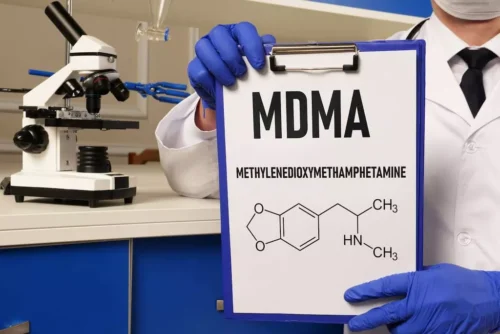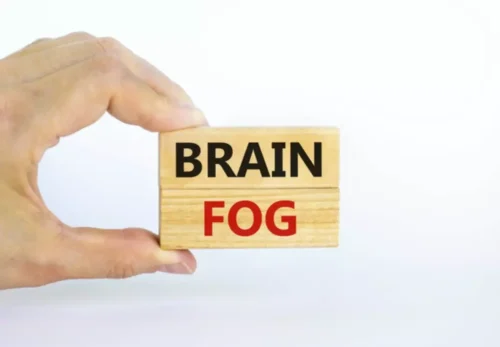
Slip-ups are usually brief and have limited consequences, making it easier to retrace your steps. For individuals in the first two stages of initial use and abuse, outpatient treatment and behavioral health counseling may be all that’s needed to get back on track. The fourth addiction stage differs from the abuse stage because the person typically realizes they have a substance problem at this point. Their addictive behaviors become so severe that they cannot function without their substance of choice. The genes people are born with contribute to about half of a person’s risk for addiction.
Break the Cycle of Addiction with Help from the Recovery Village
Our compassionate intake coordinators can answer your questions and help you understand treatment options that can work well for your specific situation. In addition to support systems, there are numerous resources available to individuals seeking help and recovery. These resources may include helplines, online forums, educational materials, and community organizations focused on addiction recovery. Understanding the stages of addiction is crucial for recognizing and addressing problematic behaviors. Addiction is a complex process that typically progresses through several stages.
Stage 6: Relapse
- When it comes to addiction, seeking help and embarking on the journey of healing is a crucial step towards recovery.
- There is sometimes a perception that addiction is something that either exists in a person’s character or does not.
- Regardless of how the initial use occurs, it is the first step toward addiction.
- Resistance is a term often confused with tolerance but specifically relates to the ability of microorganisms or tumor cells to withstand the effects of a drug that would typically be effective against them.
- Drug abuse refers to the misuse of substances in a way that is harmful or risky, often leading to negative consequences in various aspects of life, such as health, relationships, and work.
These changes in brain chemistry create addiction, tolerance and withdrawal symptoms, which all lead to cravings. Drug and alcohol addiction research has clearly demonstrated that the addicted brain is chemically and physiologically different from a normal brain. The idea of addiction being a neurological disorder is critical to understanding its development and the recovery process. According to the American Psychological Association (APA), https://ecosoberhouse.com/ addiction is a chronic brain disorder that affects an individual’s sense of pleasure, motivation, and memory. While there are psychological, biological, environmental, and social factors that can play into addiction, it is well-known that a large portion of the risk for addiction stems from genetics. Prolonged substance use can lead to alterations in neurotransmitter levels, impacting mood, motivation, and decision-making processes.
- Although personal events and cultural factors affect drug use trends, when young people view drug use as harmful, they tend to decrease their drug taking.
- While it is true that some people will be able to engage in the regular use of drugs without developing a dependence, the risk for substance abuse greatly increases during this stage.
- It is characterized by compulsive and uncontrollable use of drugs, often to the detriment of your health, relationships, and overall well-being.
Continued Use / Abuse

Over the years, a person who occasionally drinks or uses drugs casually may develop a habit that can become an addiction. This results in a combination of brain-centered compulsion and physical need for the addicting substances in the body. Once a person becomes intent on finding drugs, the choose the correct cycle of addiction prefrontal cortex activates the brain’s ‘go system.’ This triggers a person to have a strong urge to seek out drugs. It involves an intense rush of pleasure as the drugs activate the brain’s dopamine system. Maintaining sobriety requires ongoing effort, vigilance, and self-reflection.
- Therefore, education and outreach are key in helping people understand the possible risks of drug use.
- However, various treatment options are available to help people on the path to recovery from substance use disorders.
- Understanding the complexity of addiction is essential in order to address the challenges faced by individuals struggling with addiction.
- According to Research by the National Institute on Drug Abuse, relapse rates for drug and alcohol addiction typically range from 40% to 60% or even higher.
What Are the 5 Stages in the Addiction Cycle?
Ask your healthcare professional what option is ideal for the stage of addiction you’re currently in. At this stage, the addict’s health, financial status, and social life have been severely affected by their addiction. The stages of the addiction cycle are based on research from the Substance Abuse and Mental Health Services Administration (SAMSHA), which identified the areas of the brain where these stages occur. Perhaps one of the most insidious effects of addiction is the way it derails life plans and stunts personal growth. Dreams and ambitions are put on hold or abandoned entirely as the addiction takes center stage. The loss of potential – what could have been if not for the addiction – is a tragedy that’s hard to quantify but deeply felt by those in recovery.
What Are The Symptoms Of Active Drug Addiction?

It is considered a brain disease because it involves changes in the structure and function of the brain over time. Addiction is not limited to drugs alone; it can also involve behaviors such as gambling, gaming, or even excessive internet use. The first step towards seeking help and healing from addiction is recognizing the need for change. This often involves acknowledging the harmful impact that addiction has on various aspects of one’s life, including physical health, mental well-being, relationships, and overall quality of life. It can be a difficult and introspective process, but it is a vital step in breaking the cycle of addiction. Understanding the signs and symptoms of each stage of addiction is crucial in recognizing the need for change and seeking appropriate help and healing.
Social Media Use Drives Vaping and Mental Health Issues in Adolescents, Study Finds

Nevertheless, even these risk factors won’t necessarily lead to the high-risk individual developing a substance use disorder like addiction. Other contributing factors often factor in, including the subsequent stages of addiction. Three of the most important strategies for breaking the cycle of addiction include therapy, medically assisted treatment, and the development of a support system. Addiction is a chronic, often relapsing disorder characterized by a compulsive need to seek and use the substance or engage in the behavior, despite the negative consequences.
By recognizing addiction as a chronic brain disease rather than a moral failing, we can develop effective strategies for prevention, intervention, and treatment. Addiction can be defined as a chronic and relapsing disorder characterized by compulsive drug-seeking and use, despite negative consequences. It is considered a brain disease that affects the reward and motivation systems, leading to a loss of control over substance use behaviors. Drug abuse refers to a pattern of behaviors where an individual uses drugs in a way that leads to negative consequences, but it may not necessarily indicate a full-blown addiction. On the other hand, drug addiction represents a more severe and chronic condition.
Stage 6: A Substance Use Disorder
Dysfunction in these circuits leads to biological, psychological, social, and spiritual manifestations. This is evident in individuals pathologically pursuing reward and relief through substance use and other behaviors. Psychological addiction involves the mental and emotional aspects, such as cravings and preoccupation with the substance, while physical addiction includes physiological changes and the development of tolerance. At this stage, the individual’s life becomes increasingly focused on obtaining and using the substance. They may experience intense cravings, spend a significant amount of time and resources acquiring the substance, and neglect important responsibilities and relationships.

